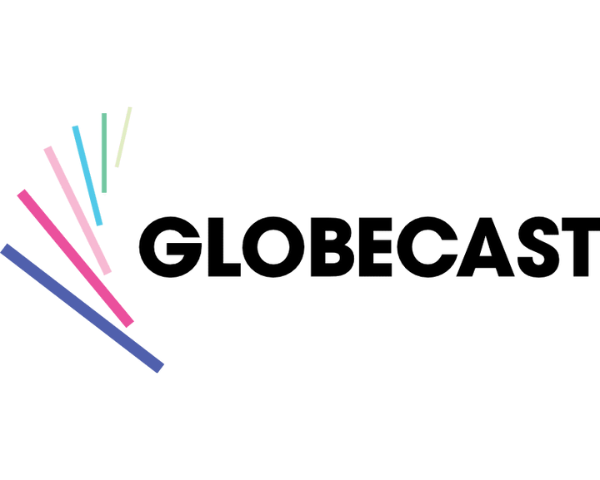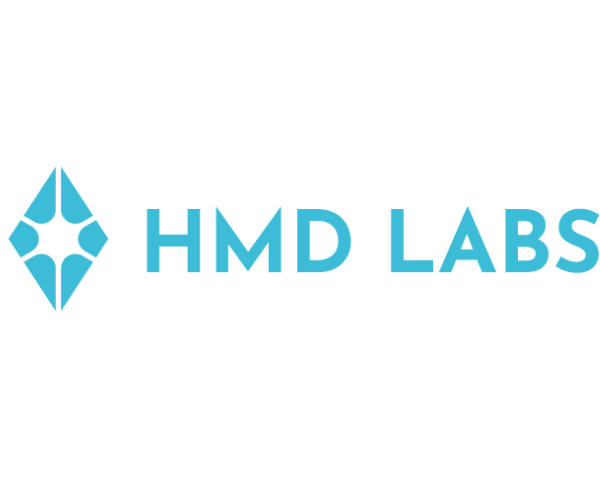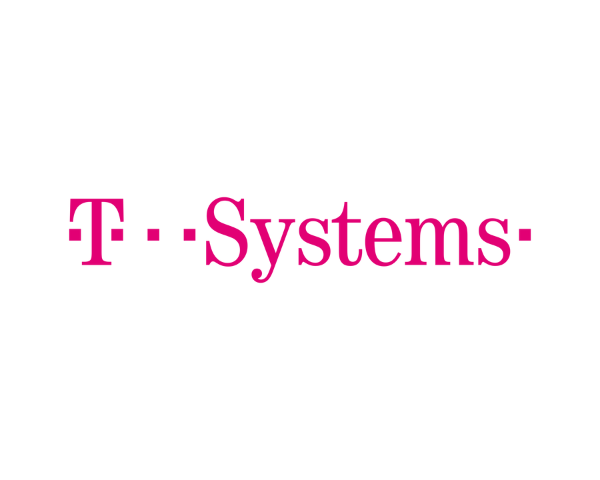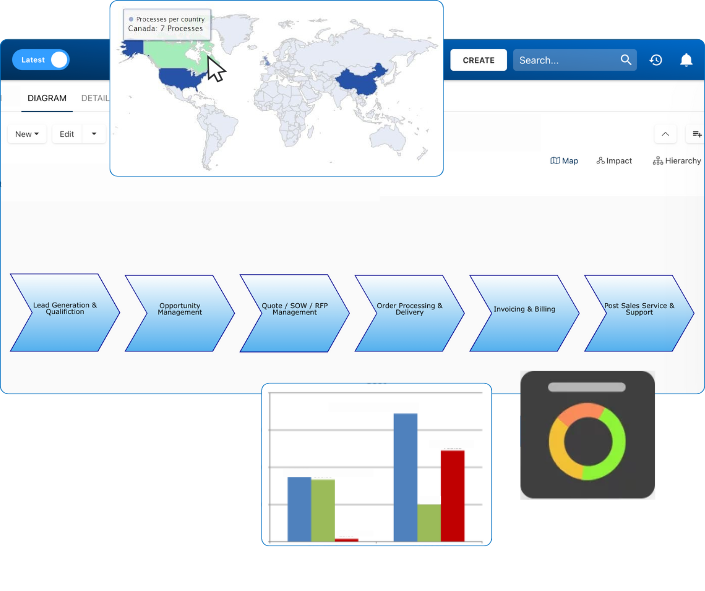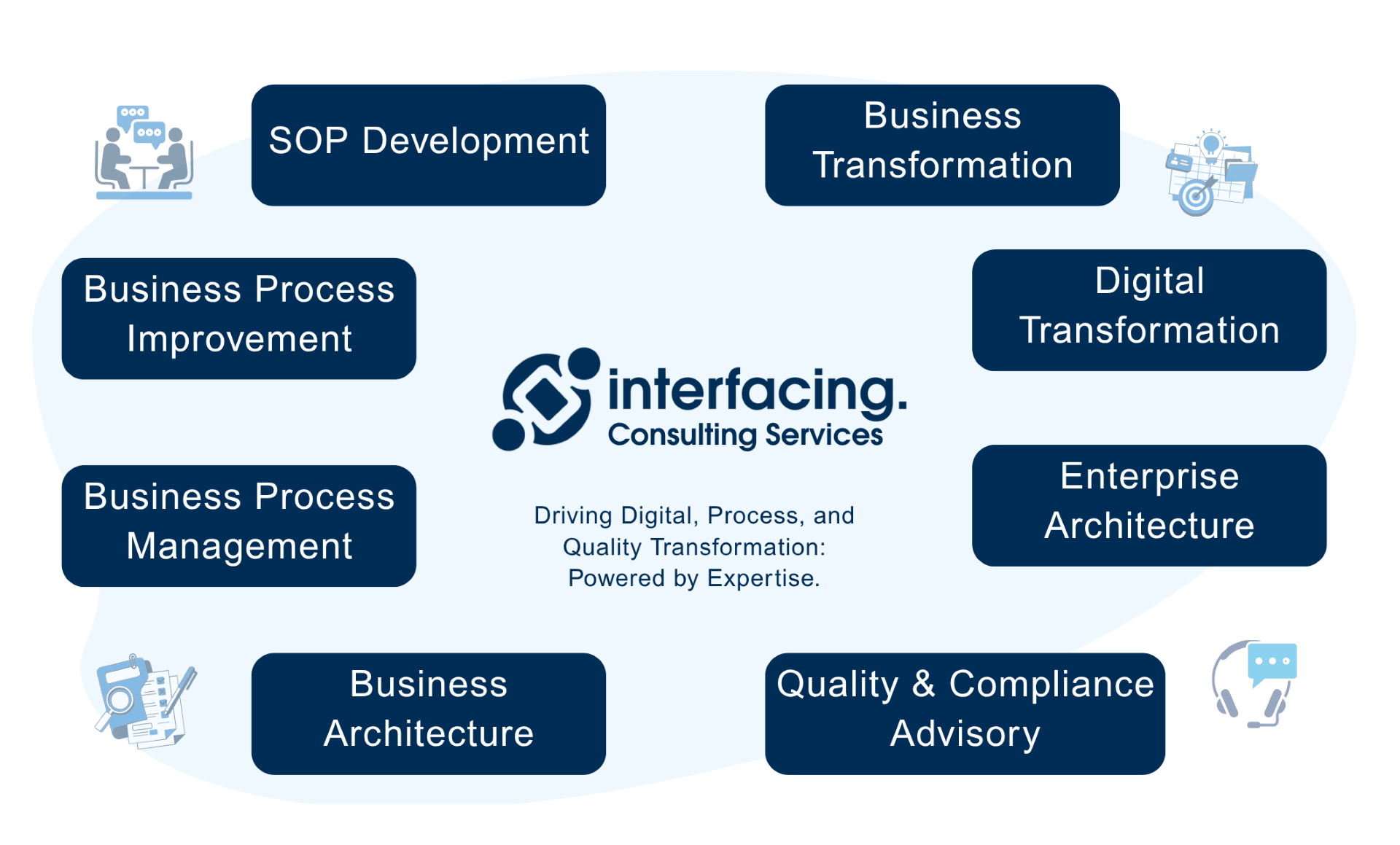- Business Process Management (BPM)Document Management System (DMS)Electronic Quality Management System (QMS)Risk, Governance & Compliance (GRC)Low Code Rapid Application Development (LC)Business Continuity Management (BCM)Enterprise Architecture (EA)Business Process Management (BPM)Document Management System (DMS)
- Document Control Overview
- AI Content Creation & Improvement
- Policy & Procedure Management (SOP)
- AI Content Mining Parser
- Collaboration & Governance
- Data Migration & Integration
- Interfacing Offline App
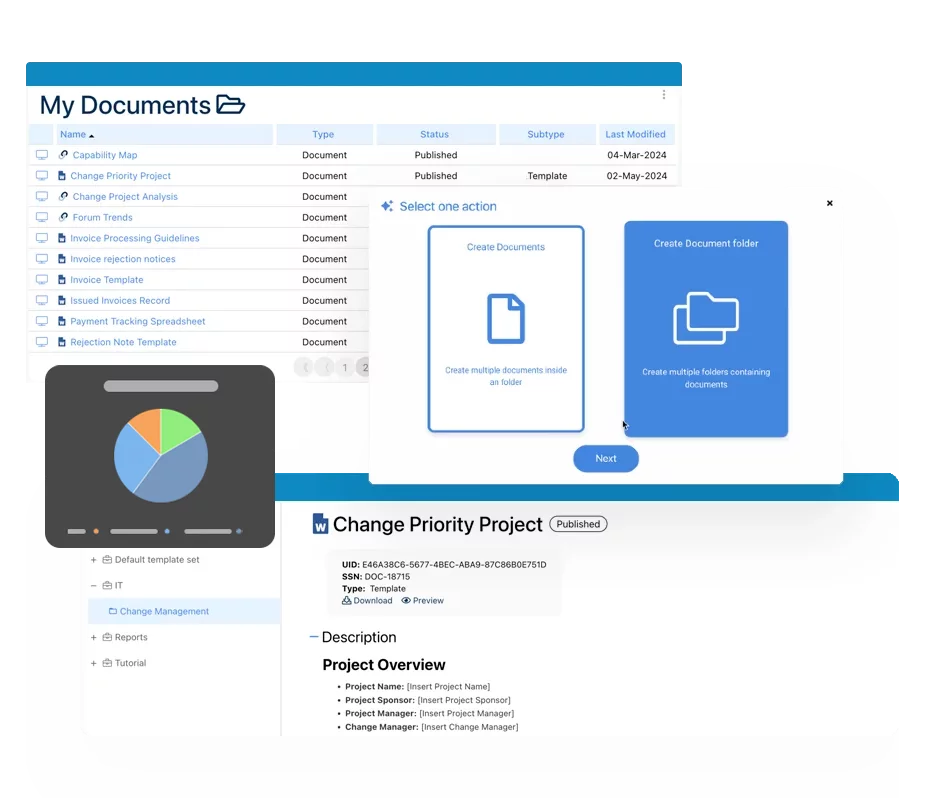 Electronic Quality Management System (QMS)
Electronic Quality Management System (QMS)- Quality Management System Overview
- Document Control & Records Management
- Audit & Accreditation Management
- Corrective & Preventative Action
- Quality Event (Non-conformity / Complaint/ Compliance)
- Risk Management
- Incident Management
- Environmental Health & Safety
- Product & Supplier Management (SCAR)
- Training Management
- Control Management
- Action Items Management
- Management Review
- FMEA
- Pharmacovigilance
- Data Migration & Integration
 Risk, Governance & Compliance (GRC)
Risk, Governance & Compliance (GRC)- Risk, Governance & Compliance Overview
- Risk & Control Management
- Regulatory Compliance
- Collaboration & Governance
- Data Migration & Integration
- Interfacing Offline App
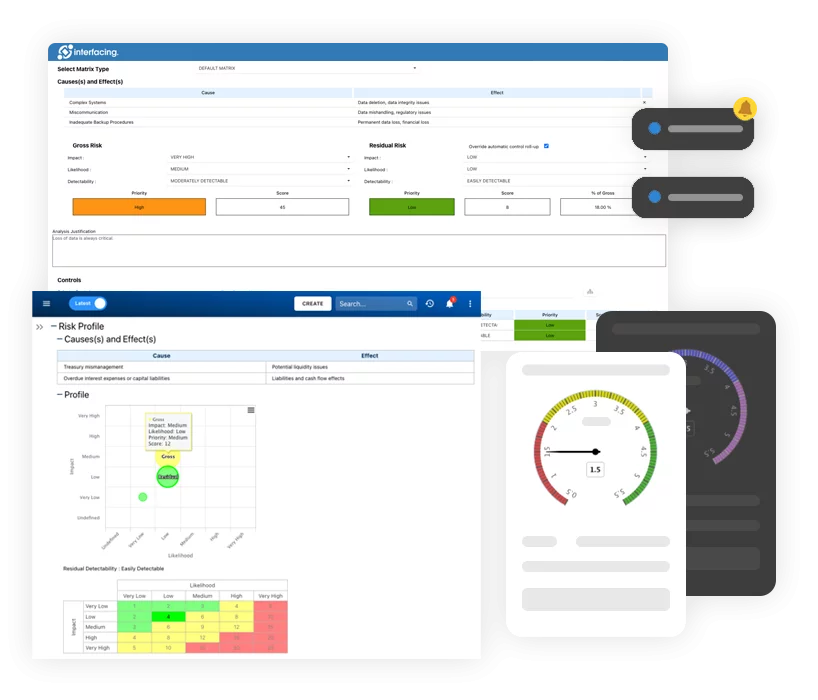 Low Code Rapid Application Development (LC)
Low Code Rapid Application Development (LC)- Low Code Automation Platform Overview
- Electronic Web Form Design (eFORMS)
- Database Table Entity Designer
- System Integration Designer
- Design & Manage Tasks
- Design & Manage BPMS Apps
- Custom Rules/Guards/Actions
- Electronic Services
- User Homepage
- BAM (Business Activity Monitoring)
- Custom Dashboard Design
- Data Migration & Integration
 Business Continuity Management (BCM)
Business Continuity Management (BCM)- Business Continuity Management Overview
- Business Impact Analysis
- Disaster Recovery Simulation
- Action Item Management
- Mass Notification Management
- Asset Management
- Interfacing Offline App
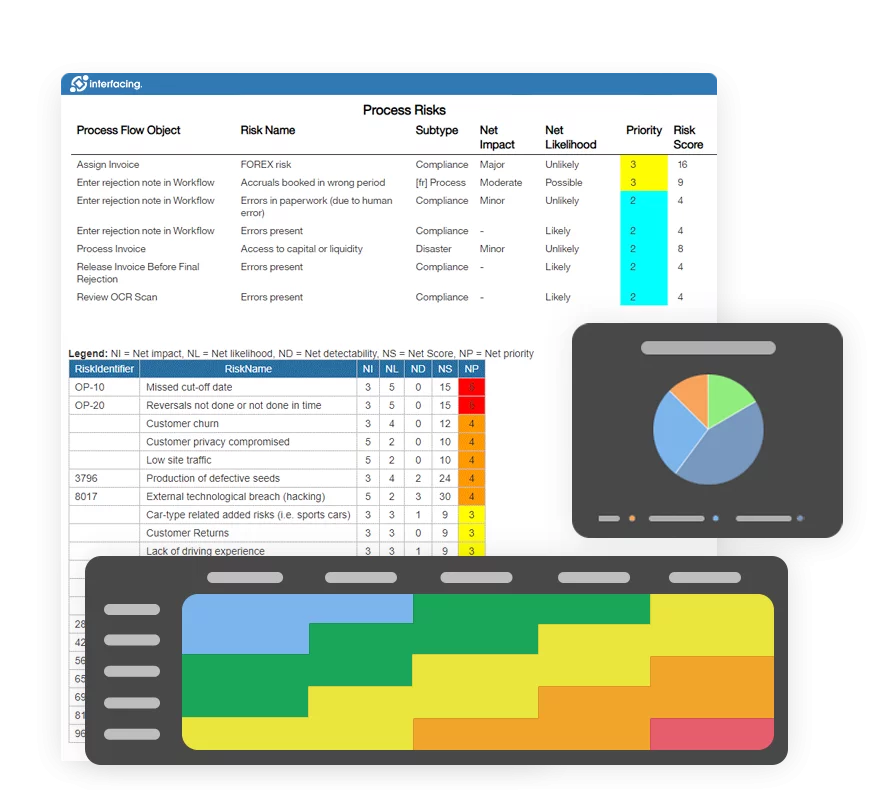 Enterprise Architecture (EA)
Enterprise Architecture (EA) - IndustriesRegulatory ComplianceUse CasesLearning CenterFramework & PracticesIndustries
- Healthcare
- Medical Device Technology
- Life Science, Pharmaceutical
- Aerospace & Defense
- Airlines and Aviation
- Media & Telecommunications
- Government and Military
- Technology
- Energy
- Logistics & Port Operations
- Banking & Capital Markets
- Retail & Consumer
- Consulting
- Education
- Engineering & Construction
- Manufacturing
- Financial Services
- Insurance
- Chemicals
Regulatory Compliance- Regulatory Compliance
- ISO
- ISO 9001 (guide)
- ISO 9001:2026 (preparation)
- ISO 17025
- ISO 27000
- ISO 27001
- ISO27002
- ISO 42001
- EU AI Act
- SOC 2 Type 1 & 2
- Sarbanes Oxley
- GxP
- GRC
- Basel
- Digital Signature
- GDPR
- IFRS
- NIST SP 800-53
 Use Cases
Use Cases- Quality Management System (QMS)
- Digital Transformation
- Continuous Improvement
- Governance, Risk & Compliance
- Knowledge Management
- System Deployment (ERP, CRM…)
 Learning CenterFramework & Practices
Learning CenterFramework & Practices - AboutCustomer SuccessPartners



The Shingo Model
Please Select contact form.
Measuring What Matters in Operational Excellence

Born in Saga City, Japan, Shigeo Shingo would grow up to become an industrial engineer and receive an honorary Doctorate of Management in recognition of his expertise in manufacturing practices (as well as the driving force behind the Toyota Production Systems). His work involved defining quality at the source, the value flow through customers, methodology of working with zero inventories and notably his work with SMED (single minute exchange of dies) for rapidly setting machines.
Dr. Shingo was later honored in 1988 with an annual prize in his name (The Shingo Prize for Excellence in Manufacturing). The Shingo Prize is awarded each year to companies worldwide that achieve “world-class operational excellence status.” This prize is unofficially referred to as the “Nobel Prize for Manufacturing” having achieved premier status over the years.
What The Shingo Model is and is not
There are ten guiding principles to the Shingo Model governing the creation of operational excellence while organizing them into four dimensions. The model also includes what is referred to as the transformation process (known as, the diamond). The critical relationship between systems, principles, results and tools is represented in this diamond.
The Shingo Model is not an additional program or an alternative initiative that organizations introduce with other programs. Rather, it focuses on the Shingo Guiding Principles and the importance of them as they relate to tools, results, systems and culture. The Shingo model gives an organization structure in-which they can anchor initiatives and close the gaps toward operational excellence.


A LOOK AT THE FOUR DIMENSIONS OF THE DIAMOND
- Principles
These are the Shingo Guiding Principles used as the basis for building a sustainable culture of excellence. In this model, the principles are divided into three dimensions (more on that below). - Tools
Many organizations will make the common mistake to focus too much on a specific tool or toolset to solve their problems. Tools will only answer the question of “how” and not the question of “why”. This leaves team members not fully understanding “why”, waiting for instructions or unable to achieve ideal results. - Systems
All successful enterprises are made up of complex systems, themselves made up of layers of subsystems, each of which contain the necessary tools to achieve successful outcomes. These successful outcomes are defined by performance and behavioral excellence. - Results
This is the focus that most leaders would consider to be their key responsibility: results or more commonly referred to as KPI’s (key performance indicators). It is important to understand that organizations will always need performance results or KPI’s to succeed. Customer value will always be needed to assess performance over enterprise leadership. What matters here is that lagging KPI’s in an organization is an indicator of targets not being achieved and since organizations place an emphasis on KPI’s as measurements of behavior, it is therefore the culture that will need to be addressed as well. - Culture
The foundation for any enterprise is the culture. This is at the very heart of the Shingo Model. All guiding principles will need to be embedded in the culture. The principles will guide ideal behaviors to what will become known as behavioral goals. The shift in these behaviors required to drive future systems behavior is in the overall cultural transformation of the organization.
UNDERSTANDING THE NEED FOR THE SHINGO MODEL
It does not matter whether the objectives of an organization is altruistic or financial in nature, in all facets of the organization, the focus by executives is on results. Systems are designed for this specific purpose and tools are then created to support these systems. When a particular tool or system does not achieve the target results, executives will begin the process of changing or modifying the current systems used in hopes of reaching the target set forth.
While on the surface this methodology looks simple enough, it is missing recognition of a critical component. Systems and tools cannot operate a business alone. They need people to do it properly. Each person in an organization behaves in a way consistent with their individual sets of values and beliefs. It is the aggregate of all these behaviors that will ultimately define the organization’s culture; and culture is what will greatly influence any organization’s results.
THE THREE INSIGHTS OF ORGANIZATIONAL EXCELLENCE
If we look at organizations that are created by accident or without strong attention to culture most times will have long-standing negative effects. Cultures built around promoting those who seek to gain power, might have individuals who keep knowledge to themselves in an effort to maintain decision making authority as trusting others is not possible their minds. This will make the organization react to issues much slower than normal, in addition to the fact that the decisions made would not be in the best interest of the organization as the decision-maker may not be the best person to make the decision. Taking this one step further, one can see how organizations whose behaviors foster fear or blaming, survival mode, backstabbing or general malaise can contribute to negative cultures endemic to the organization.
On the other hand, if we look at organizations practicing operational excellence, we see companies built around trust, humility, respect, innovation empowerment and collaboration. The question now becomes what exactly is at the root of these high-functioning organizations? How do their results differ from lesser, weaker cultures? How do they manage the culture rather than the culture managing the organization? The Shingo Model addresses this in three distinctive insights that unfold into the guiding principles:

Ideal Results Require Ideal Behaviors
The way people behave in an organization will ultimately determine the organizations results.
Ideal results will only come about by leaders creating a culture where ideal behavior is the expectation and practiced by each team member.

Purpose and Systems Drive Behavior
In short, behaviors are influenced greatly by beliefs. What needs focus regarding this is recognizing the effect that systems have on behavior.
If we look at systems overall, we see that they are designed to create a specific business result without any regard for the behavior that the system drives.
This leaves managers working hard to realign management, improvements, and work systems in order to achieve the ideal business results.

Principles Inform Ideal Behavior
The foundational rules that govern all consequences are known as principles.
The more one understands the principles, the clearer the person will understand what their behavior would be in relation to the principles.
The better one understands the ideal behavior, the better they will be at understanding how to design systems to meet ideal results.
A RELENTLESS QUEST
If an organization truly wishes to remain successful in the long-term, they will need to be relentless in their quest to continually improve in order to make things better. Any failure to provide continuous improvement will invariably result in the decline of the organization. Excellence must always remain a unanimous focus point for each team member. It is important for all team members to be aware that even though perfection may not actually be attained, it is within the pursuit of excellence to perfection that brings out the absolute best in all humans.


TEN GUIDING PRINCIPLES OF THE SHINGO MODEL
1. Lead with Humility
A common trait among leaders of business excellence is a sense of humility. Humility is an enabling principle that precedes learning and improvement. A leader’s willingness to seek feedback, listen attentively, and continually learn creates an environment in which associates feel respected and energized and freely give of their creative abilities. Improvement is only possible when people are willing to acknowledge their vulnerability and abandon biases in their pursuit of a better way.
Examples of Ideal Behavior
– There is consistent and predictable leadership engagement where work is done.
– Employees can report issues with confidence in a positive response.
Interconnection Solution Alignment
Business Process Center (EPC): Offering transparency into goals, policies, processes, and performance.
EPC and Open Communication: Openly post issues, questions, and improvements with the ability to monitor subsequent actions.
2. Respect for the Individual
Respect must become something deeply felt by and for every person in an organization. Respect for each individual naturally includes respect for customers, suppliers, the community, and society at large. People are encouraged when this kind of respect is demonstrated. Most associates will say that being respected is the most important thing they want from their job. When people feel respected, they give much more than their hands—they give their minds and hearts as well.
To better understand the principle of respect for each individual, simply ask yourself “why?” The answer is because we are all human beings with value and potential. Because this is true, each individual deserves my respect.
Examples of Ideal Behaviors
– Create an employee development plan that includes appropriate goals.
– Involve employees in improving the work done in their areas.
– Ongoing problem-solving training.
Aligning the interconnection solution
Clarifying roles and responsibilities
Sharing knowledge with others experiencing similar issues, problems, and solutions
3. Focus on the process
All results are a consequence of a process. It is almost impossible for even good people to consistently produce ideal results with a poor process both inside and outside the organization. There is a natural tendency to blame the people involved when something goes wrong or is less than ideal, when in reality the vast majority of the time the problem is rooted in an imperfect process, not in the people.
Examples of ideal behaviors
– When an error occurs, focus on improving the process that caused it.
– Ensure that all parts, materials, information, and resources are correct and meet specifications before using them in a process.
Alignment of the interconnection solution
The process is at the heart of EPC: transparency, location variance management, visualization, focus on continuous process improvement and not on blaming individuals.
4. Embrace scientific thinking
Innovation and improvement are the consequence of repeated cycles of experimentation, direct observation, and learning. The relentless and systematic exploration of new ideas, including failures, allows us to constantly refine our understanding of reality.
Examples of ideal behavior
– Follow a structured approach to problem solving.
– Encourage employees to explore new ideas without fear of failure.
Interconnection solution alignment
Structured and organized frameworks
Integrated best practice approaches: (RACI, RASCI, SIPOC),
Scientific improvement methodologies: Lean Six Sigma, Simulation, Intelligence-based impact analysis
5. Flow and carryover value
Customer value is maximised when it is created in response to real demand and in a continuous, uninterrupted flow. While single flow is the ideal, demand is often distorted between and within organisations. Waste is anything that disrupts the continuous flow of value.
Examples of ideal behaviour
– Avoid creating or having more products or services than are needed to meet customer demand.
– Ensure that the necessary resources are available when required.
Aligning the interconnection solution
Automated end-to-end value streams to visualise all upstream and downstream activities
Visualise all customer touchpoints and customer satisfaction by individual interface and touchpoint
6. Ensure quality at source
Perfect quality is only achieved when every element of work is done right the first time. If an error occurs, it must be detected and corrected at the time of its creation.
Examples of ideal behaviors
– Arrange work areas so that potential problems are immediately visible.
– Stop work to correct errors before continuing.
Aligning the interconnection solution
Forums are linked to the process and task to identify the exact source of the problem and the action taken for immediate remediation.
7. Striving for Perfection
Perfection is an aspiration that is unlikely to be achieved, but the pursuit of which creates a mindset and culture of continuous improvement. The realization of what is possible is limited only by the paradigms through which we view and understand the world.
Examples of Ideal Behaviors
– Create long-term solutions rather than letting temporary patches be applied.
– Constantly work to simplify work.
Aligning the Interconnected Solution
Program-based, not project-based: Extends to all employees in the company so they are part of the company culture
Promotes continuous improvement with ongoing monitoring
8. Creating Constancy of Purpose
Unwavering clarity of why the organization exists, where it is going, and how it will get there enables people to align their actions, as well as innovate, adapt, and take risks with greater confidence.
Examples of Ideal Behaviors
– Clearly communicate the organization’s direction and purpose to everyone.
– Set goals that are related to the organization’s overall goals.
Alignment of the interconnection solution
Clearly defined goals with sub-goals that support the individual goal and performance indicators that quantify and monitor the performance of that goal.
Documentation and communication of all high-level company policies and values
9. Think systemically
Understanding the relationships and interconnectedness of a system allows us to make better decisions and improvements.
Examples of ideal behaviors
– Remove any barriers that impede the flow of ideas, information, decisions, product, etc.
Alignment of the interconnection solution
Open ability to raise issues, challenges, barriers, exceptions, etc. that prevent the organization from achieving a specific goal and propose recommended changes and improvements that support that goal.
Break down goals and performance indicators down to the employee level so they understand how their goals align with those of the company.
10. Create Customer Value
Ultimately, value must be defined through the lens of what a customer wants and is willing to pay for. Organizations that fail to effectively and efficiently deliver on this critical outcome cannot sustain themselves over the long term.
Examples of Ideal Behaviors
– Work to understand customer needs and expectations.
Aligning the Interconnection Solution
Align customer measures with corporate objectives and align them directly with operational processes
Monitor performance of key customer measures (internal and external)
Survey customer satisfaction with visualization of problem areas

Why Choose Interfacing?
With over two decades of AI, Quality, Process, and Compliance software expertise, Interfacing continues to be a leader in the industry. To-date, it has served over 500+ world-class enterprises and management consulting firms from all industries and sectors. We continue to provide digital, cloud & AI solutions that enable organizations to enhance, control and streamline their processes while easing the burden of regulatory compliance and quality management programs.
To explore further or discuss how Interfacing can assist your organization, please complete the form below.

Documentation: Driving Transformation, Governance and Control
• Gain real-time, comprehensive insights into your operations.
• Improve governance, efficiency, and compliance.
• Ensure seamless alignment with regulatory standards.

eQMS: Automating Quality & Compliance Workflows & Reporting
• Simplify quality management with automated workflows and monitoring.
• Streamline CAPA, supplier audits, training and related workflows.
• Turn documentation into actionable insights for Quality 4.0

Low-Code Rapid Application Development: Accelerating Digital Transformation
• Build custom, scalable applications swiftly
• Reducing development time and cost
• Adapt faster and stay agile in the face of
evolving customer and business needs.
AI to Transform your Business!
The AI-powered tools are designed to streamline operations, enhance compliance, and drive sustainable growth. Check out how AI can:
• Respond to employee inquiries
• Transform videos into processes
• Assess regulatory impact & process improvements
• Generate forms, processes, risks, regulations, KPIs & more
• Parse regulatory standards into requirements

Request Free Demo
Document, analyze, improve, digitize and monitor your business processes, risks, regulatory requirements and performance indicators within Interfacing’s Digital Twin integrated management system the Enterprise Process Center®!
Trusted by Customers Worldwide!
More than 400+ world-class enterprises and management consulting firms





















